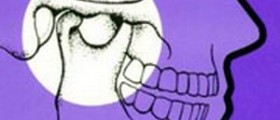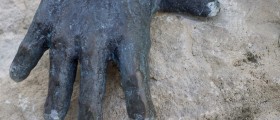
Benign hypermobility syndrome (BHJS) is a connective tissue disorder characterized by certain musculoskeletal symptoms. Still, there is no systemic rheumatologic disease. Joint looseness is associated with daytime pain, nighttime awakening and may be responsible for discomfort after exercising. Pain due to this syndrome may last for a long period of time.
Clinical Characteristics of Benign Joint Hypermobility Syndrome
In majority of cases people suffering from BHJS complain about pain and swelling that occur during the late afternoon or at night. The pain also commonly occurs right after exercise or some activity. It is generally located in the lower extremities (calf or thigh muscles). One more characteristic of such pain is that it predominantly affects the knees and elbows.
Even though swelling is not so common finding, it may sometimes develop due to normal, activity-associated trauma. It is a consequence of fluid build-up in the affected joints. Fluid gets easily re-absorbed and swelling may withdraw within hours. And finally, there is no inflammation, therefore, no signs such as redness of the skin of warmth of the affected area.
Who is Prone to Benign Hypermobility Joint Syndrome?
It is estimated that girls have more mobile joints comparing to boys. The pain is more intensive among children while teenagers may not report pain of severe intensity because their joints become tighter as they get older.
Testing large groups of school children confirmed benign hypermobility joint syndrome in about 7-40% of all tested school children. And in 8-11% of them the pain occurred together with some activity, mostly at night.
It is still unknown why some children with this syndrome suffer from pain while others do not have to deal with this unpleasant sensation.
Benign Hypermobility Joint Syndrome Diagnosis and Treatment
The condition can be easily confirmed with physical examination. In BHJS joints are looser than normal. There are 5 specific mobility test performed for diagnosing the condition. In order to rule out arthritis doctors perform laboratory tests and sometimes children additionally undergo X-ray.
Treatment for BHJS is individual and depends on patient's medical history, overall health and severity of symptoms (pain and discomfort). Additional symptoms also determine what kind of treatment will be prescribed.
A planned exercising program is of great importance for overcoming BHJS. It can reduce flexibility, increase muscle strength and successfully prevent potential future injury. Joint protection techniques are also highly beneficial for prevention of over-stretching.
Affected joints can be protected by wearing splints or braces and sometimes patients require medications to deal with symptoms of the condition. The most commonly prescribed drugs are naproxen and ibuprofen. Finally, pain reduction is also possible with proprioceptive exercises.

















Your thoughts on this
Loading...